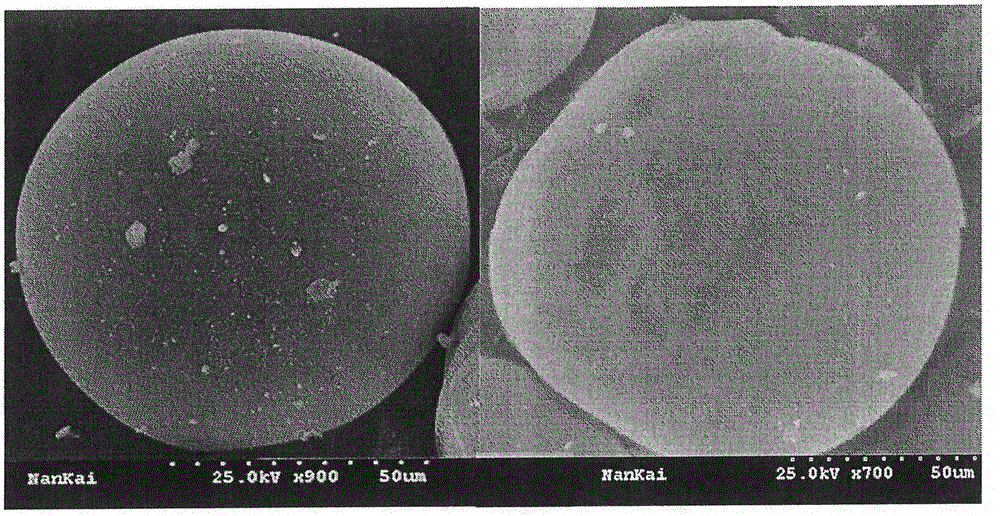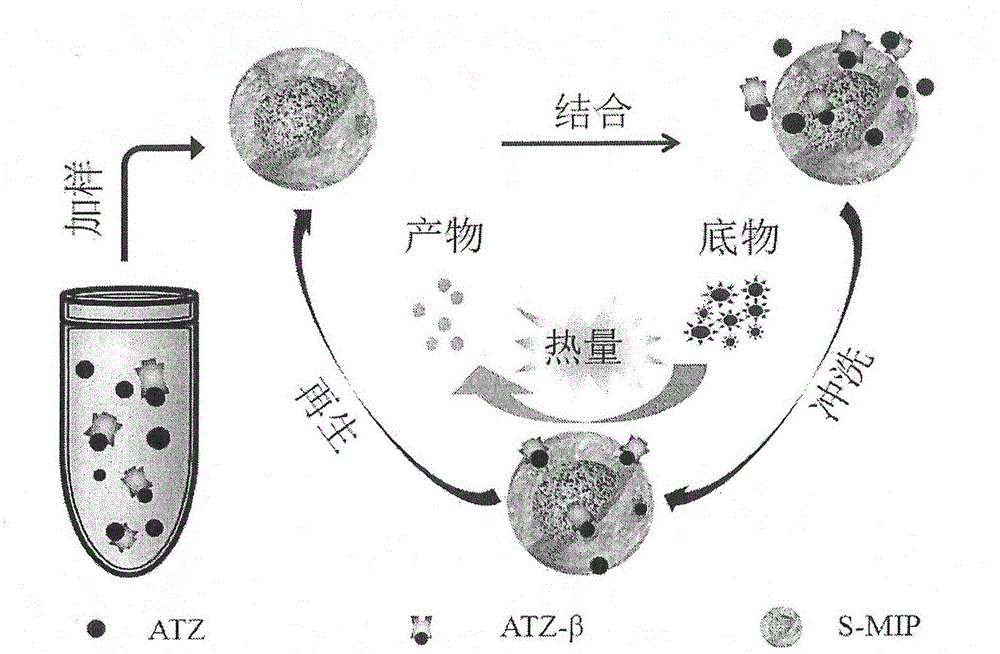Calorimetric bionic competitive detection method for detecting pesticide Atrazine residue
An atrazine and detection method technology, applied in the field of biosensors, can solve problems such as lack of specificity, and achieve the effects of simple sample pretreatment, rapid specific detection method, and good application prospects
- Summary
- Abstract
- Description
- Claims
- Application Information
AI Technical Summary
Problems solved by technology
Method used
Image
Examples
Embodiment 1
[0052] Follow step 1 to prepare S-MIP.
[0053] (1) Put the surface imprinted product into the reactor and place it in the thermal regulator, and pass through the carrier liquid (0.02mol L -1 , pH 5.8 acetic acid-sodium acetate buffer, containing 2% DMF) equilibrium flow system, system flow rate 1000μl min -1 ;
[0054] (2) Prepare atrazine solution with a gradient concentration of 0-20ng mL-1 using the carrier liquid as a solvent, and mix it with a certain amount of β-lactamase-labeled atrazine to prepare a sample.
[0055] (3) After filtering through a 0.22 μm needle filter, add the sample solution. The analyte and the enzyme-labeled analyte compete to bind to the imprinted holes on the surface of the S-MIP under the mobile phase. Excess sample is washed out of the reaction column with the mobile phase.
[0056] (4) The thermal signal change produced by adding the specific substrate-ampicillin is collected by the Wheatstone bridge, converted and displayed as a peak signa...
PUM
 Login to View More
Login to View More Abstract
Description
Claims
Application Information
 Login to View More
Login to View More - R&D Engineer
- R&D Manager
- IP Professional
- Industry Leading Data Capabilities
- Powerful AI technology
- Patent DNA Extraction
Browse by: Latest US Patents, China's latest patents, Technical Efficacy Thesaurus, Application Domain, Technology Topic, Popular Technical Reports.
© 2024 PatSnap. All rights reserved.Legal|Privacy policy|Modern Slavery Act Transparency Statement|Sitemap|About US| Contact US: help@patsnap.com










